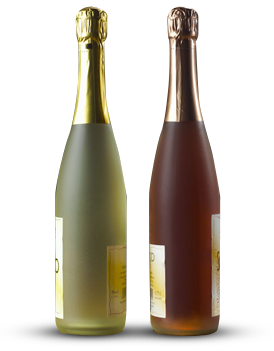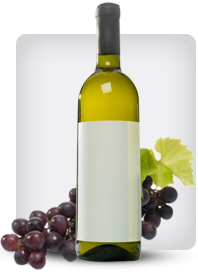

Tag: Appeal
Aging Potential of Premium Merlot: Beyond the Early Appeal
Posted onMerlot, often celebrated for its approachable, plush, and fruit-forward character in its youth, is frequently underestimated as a candidate for long-term cellaring. While mass-produced bottlings are crafted for immediate enjoyment, premium Merlot, sourced from esteemed terroirs and crafted with intention, possesses a remarkable capacity to evolve and complexify with age. Understanding the factors that contribute to its longevity reveals a wine of profound depth and sophistication, challenging its simplistic reputation.
The Foundation of Longevity: Structure and Balance
The ability of any wine to age gracefully hinges on its structural components: acidity, tannin, and alcohol. In premium Merlot, these elements exist in a harmonious balance that acts as a preservative, allowing the wine to develop slowly over time.
- Acidity: High-quality Merlot retains a vibrant acidity that provides freshness and prevents the wine from becoming flabby or tired as it matures.
- Tannins: While typically softer and more velvety than Cabernet Sauvignon, Merlot from great sites has a firm, finely-grained tannic structure. These tannins polymerize over time, softening and integrating into the wine, which contributes to a smoother mouthfeel.
- Fruit Concentration & Alcohol: A core of ripe, concentrated fruit and well-managed alcohol levels provide the material and body necessary to support extended aging without one element overpowering the others.
Terroir’s Crucial Role: Where Merlot Ages Best
Not all Merlot is created equal. The grape’s aging potential is profoundly influenced by its place of origin. The world’s most age-worthy Merlots hail from specific, often limestone and clay-rich, terroirs that naturally stress the vines, yielding lower yields and more concentrated berries.
- Pomerol & Saint-Émilion (Bordeaux, France): The benchmark for aged Merlot. Château Pétrus, while an extreme example, is predominantly Merlot and can evolve for half a century. Wines from estates like Le Pin, Vieux Château Certan, and Château Cheval Blanc (a Merlot-Cabernet Franc blend) demonstrate how Merlot develops incredible complexity of truffle, forest floor, cigar box, and dried cherries over 15-30 years.
- Tuscany, Italy: In regions like Bolgheri and within the “Super Tuscan” movement, Merlot is often blended or sometimes bottled alone. Wines like Masseto (100% Merlot) are legendary for their power and aging ability, developing notes of black plum, leather, and spice.
- Napa Valley & Washington State, USA: Top-tier producers in these regions focus on hillside vineyards and careful winemaking to produce structured Merlots. With time, these New World examples can develop nuances of cedar, cocoa, and stewed dark fruits, reaching their peak over 10-20 years.
The Evolution in the Bottle: A Flavor Journey
The transformation of a premium Merlot in the bottle is a study in aromatic and flavor development.
- Youth (1-5 years): The wine is dominated by primary fruit aromas—ripe plum, black cherry, raspberry, and often chocolate or mocha notes from oak influence. The tannins may be more perceptible.
- Maturity (5-15 years): The fruit becomes more subdued and savory. Secondary characteristics emerge, such as earth, leather, tobacco, and cedar. The texture becomes notably silkier.
- Full Maturity (15+ years): In the finest examples, tertiary notes take center stage. Think truffle, forest floor, dried figs, cigar ash, and graphite. The wine achieves a seamless harmony where no single component stands out, offering a profound and complex drinking experience.
Conclusion: An Investment in Complexity
To dismiss Merlot as a simple, early-drinking wine is to overlook one of the vinous world’s most versatile and rewarding grapes. Premium Merlot, with its robust structure and inherent balance, offers a compelling narrative of evolution. For the patient collector, cellaring these wines unlocks a dimension of flavor and elegance that their youthful versions only hint at, solidifying Merlot’s rightful place among the great age-worthy red varieties.
Payment of the Environment and Surface to the Appeal of the Stags Jump Wine Area
Posted onContribution of the Environment as well as Terrain to the Appeal of the Stags Jump Wine Area
Simply off Silverado Trail you will find the major roadway that winds its method with Stags Leap. This is where the excellent majority of the vineyards in Stags Leap are situated. Although the area is situated off Highway 29, the primary road of Napa Valley, vacationers discover that the vineyards in this location are rather welcoming. The instead fascinating name of the area could be associateded with a tale which indicates a stag jumped from the palisades in order to escape from a team of hunters.
Much of the popularity of the Stags Leap wine area could be credited to the climate as well as the surface in the area. The volcanic soil of the Stags Jump area is specifically well matched for the development of Cabernet Sauvignon. The Taxicabs produced in the Stags Leap location have the tendency to be much more controlled compared to several of the Cabernets expanded in other areas, especially those grown in the warm north regions.
The modest climate of Stags Leap results from the row of hillsides that leave the western border. The wind from San Pablo Bay is hence drawn up in a type of funnel. The area is cooled as an outcome, permitting the acidity in the grapes to create more fully. Interestingly sufficient; however, the wonderful bulk of the wineries in Stags Leap are positioned on inclines that face the west. Due to this they receive a fair amount of afternoon sun. The fruit in this area is perfectly mature as a result, showcasing clearly established tannins. This is a particular that has ended up being extensively connected with the wineries in Stags Leap.
While Stags Leap, like most of the other areas in Napa Valley, had a hard time to obtain prestige throughout the center of the 20th century, the 1976 Paris Blind Sampling confirmed to be an important turning point for Stags Leap. In reality, it has actually been argued that this event was one of the most important occasion in the establishment of Stags Leap wineries. Stags Leap Wine Cellars handled to attain worldwide recognition when their Cask 23 Cabernet Sauvignon obtained top place as well as beat out countless premier red wines from the Bordeaux region.
The Cabernet Sauvignon generated in Stags Leap has created the nickname of the Iron Clenched Fist in a Velour Glove. It is thought that the volcanic terrain in the region is in charge of the one-of-a-kind characteristics of the wines in the Stags Leap area.
The terrain in the area can be partitioned right into 2 distinct locations. They are the bogs and capitals. The dirts in the hills often tend to be even more volcanic as well as are ideally suited to the growth of Cabernet Sauvignon along with other red Bordeaux varietals such as Merlot, Malbec and also Cabernet Franc. Petite Sirah, Zinfandel as well as Petit Verdot also do quite well below. The fruit in this particular region have the tendency to be grown in somewhat reduced quantities as an outcome of the well drained pipes soil; nonetheless, it is fairly intense.
Near the Napa River, the soil is well drained too. In comparison to the hill soil; however, the dirt near the River is mainly composed of clay as well as silt. The vineyards in this region have a high level of alluvial volcanic sediment that has been cleaned down from capitals over a duration of several years. As a result of this, the dirts here often tend to be really abundant. White varietals have a tendency to do effectively in this field consisting of Sauvignon Blanc, Chardonnay as well as Semillon.
popular posts
-

Top Northern Rhône Syrah 2025: A Vintage of Finesse and Power
10-31 2025The Northern Rhône Valley, the spiritual home of the Syrah grape, is poised to deliver one of its most compelling vintages in recent memory Read More
-

How to Decant Merlot Properly: A Guide to Unlocking Complexity
10-29 2025Merlot, with its signature plush texture and notes of dark cherry, plum, and chocolate, is one of the world’s most beloved red wines. While Read More

